I love the smell of lilacs blooming in the springtime! The beautiful edible blossoms don’t last long, so I like to try to preserve that flavor to enjoy throughout the year. This lilac mead recipe is a delicious way to do that!
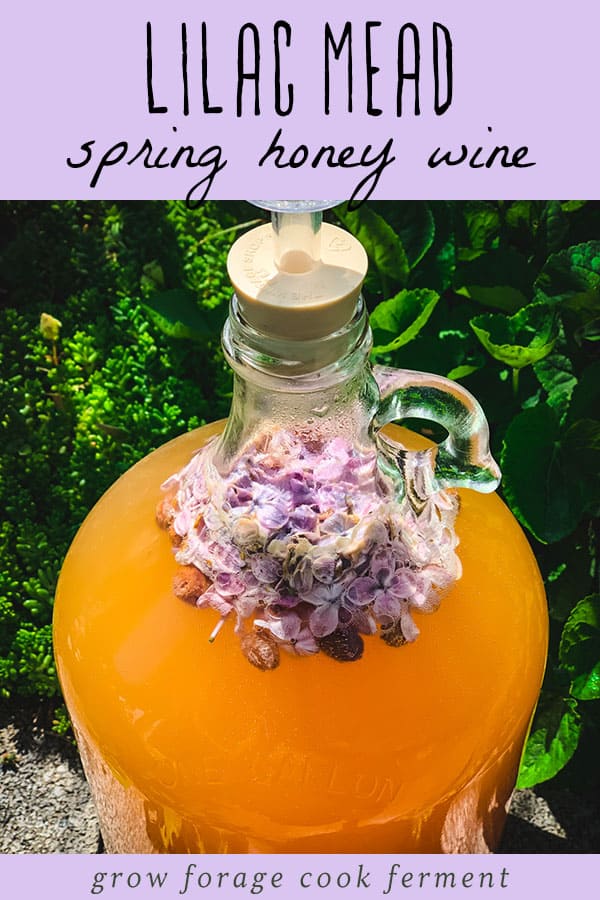
Want to save this post for later?
Simple Mead Making Ebook
If you want to learn more about making mead, I have a Simple Mead Making for Beginners eBook just for you!
It has ingredient and equipment checklists and detailed instructions for brewing and bottling your mead, so be sure to check that out if you’re new to the mead making process.
Harvesting Lilac Flowers for Mead
You only need a cup or two of freshly picked lilac flowers for this lilac mead recipe!
Lilac flowers grow in bunches and the individual blossoms come off the stem easily. You do need to be mindful of where you are gathering the flowers, as most lilacs are cultivated plants that grow in yards.
If they are your own lilacs, then no problem! Just make sure you are harvesting from plants that are away from busy roads and haven’t been sprayed with anything to avoid toxins.
If you don’t have any of your own lilacs they are usually easy to find!
Make sure to ask for permission before you harvest lilacs from anyone else’s yard, and check that they aren’t sprayed with any toxins. I find it’s always nice to tell them what you are making and offer to share!
Lilac infused honey, lilac syrup, and jelly are also great way to use these aromatic blooms!
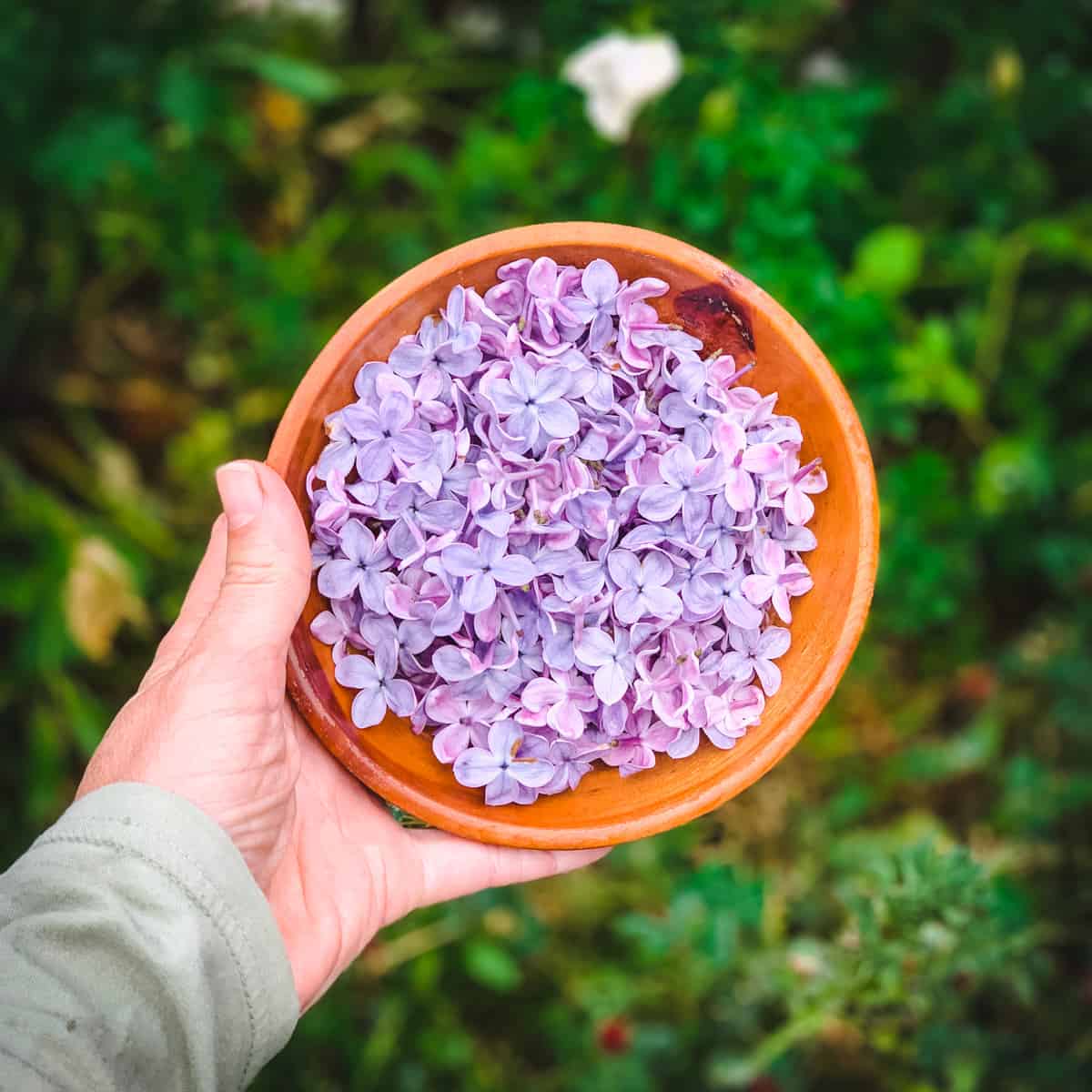
Lilac Mead Recipe
Mead is wine that is made from honey instead of sugar. This one gallon lilac mead is easy to make and a delicious way to preserve the flavor of lilacs all year!
This lilac mead recipe is a variation on my simple one gallon mead recipe.
For more detailed directions and photos of the whole process, I recommend heading over to that post first.
You can find all of the equipment and ingredients you need for mead making here.
This lilac mead is technically called a metheglin, which is mead that is made with herbs, spices, or flowers added.
Some other metheglin recipes I have on this blog are dandelion mead, wildflower mead, and elderflower sparkling mead.
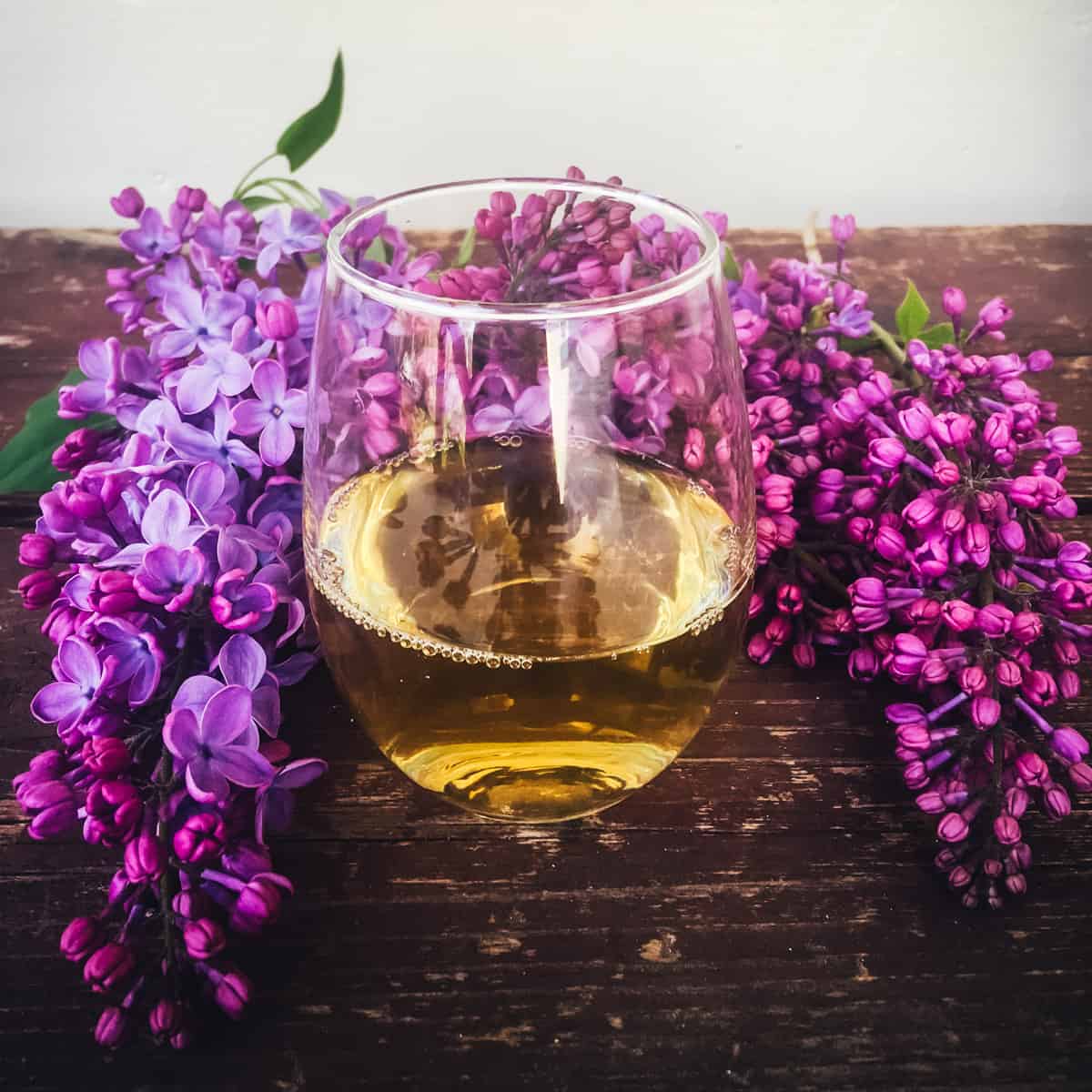
Make the Lilac Tea
The first step to making this mead is to make lilac tea.
Bring 1/2 gallon of water to nearly a boil and add one cup of lilac flowers, then turn off the heat. Let the flowers steep for 15-20 minutes, then strain them out.
Add the honey to the warm lilac tea and stir to dissolve.
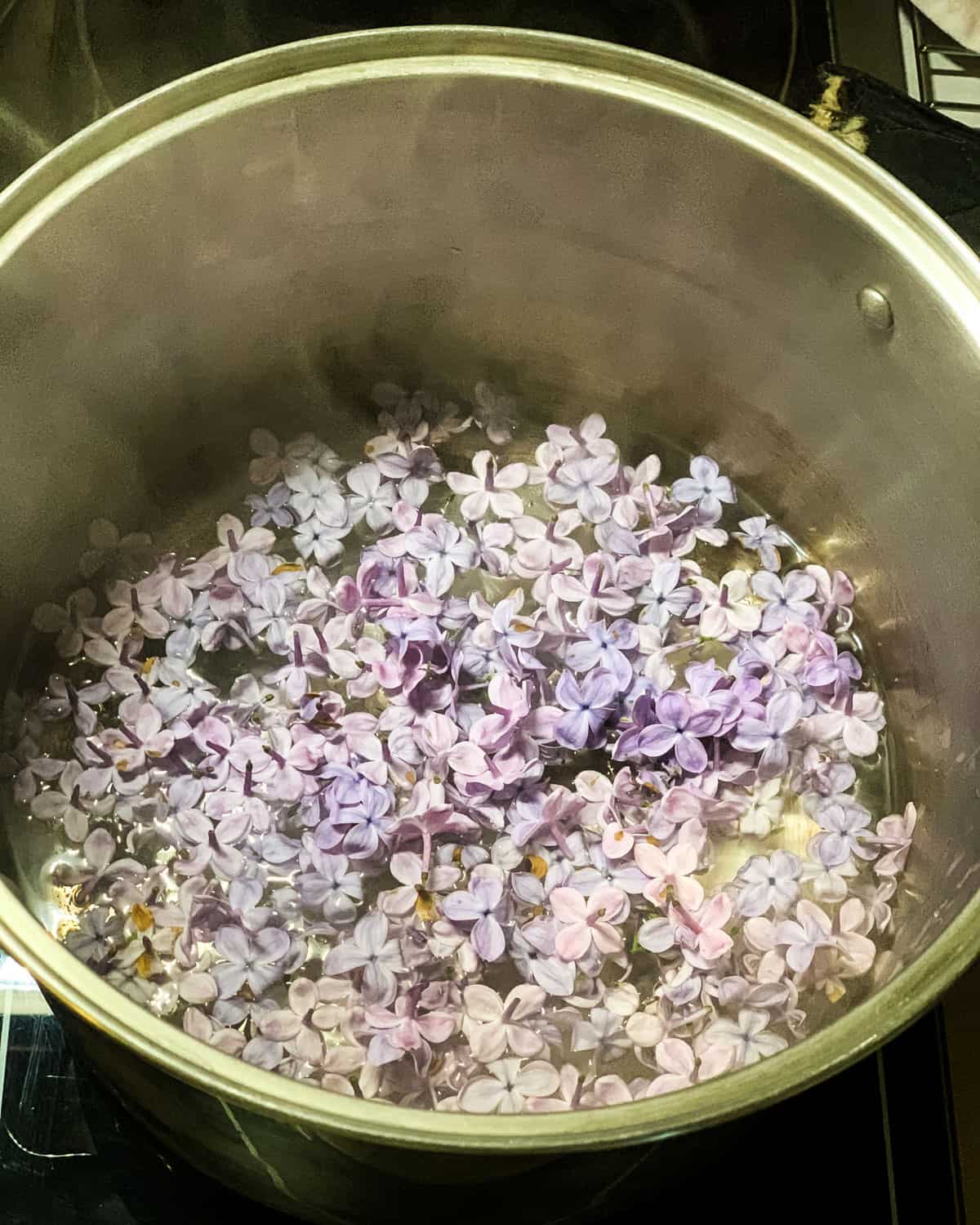
Brew the Lilac Mead
I like to add more lilac flowers as the mead is brewing, just to get more of that flavor, but it is optional.
Use a funnel to pour the lilac tea and honey mixture into a one gallon jug. Add the raisins, then add up to another cup of fresh lilac flowers to the jug if you’d like.
Top off the jug with unchlorinated water, leaving 2-3 inches of headspace at the top. Cap the jug and shake to combine everything.
Then pitch the yeast, cap the jug again, and shake vigorously for a few minutes.
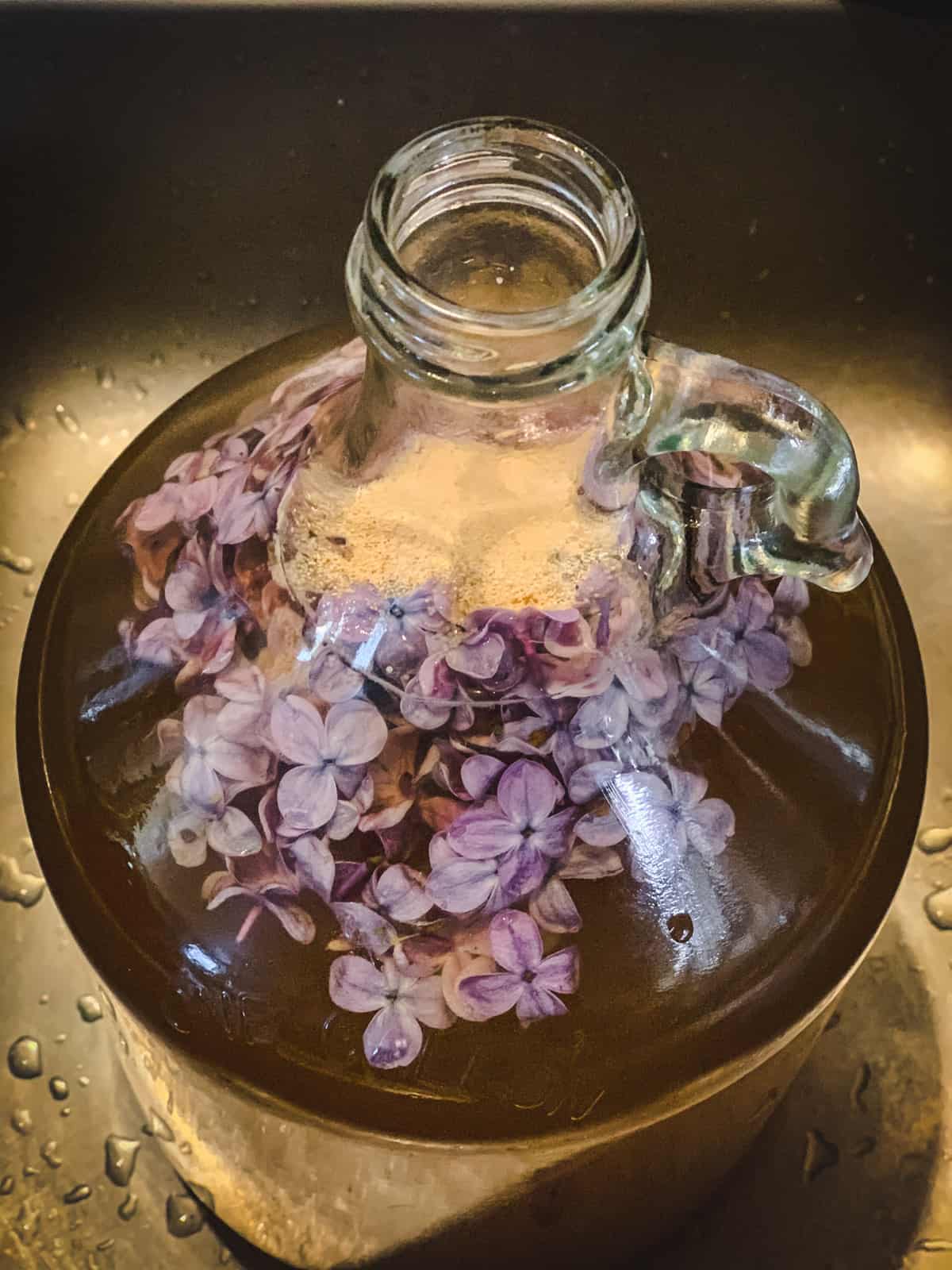
Ferment the Lilac Mead
Top the jug with an airlock (make sure to fill it with water to the line first) and set the lilac mead aside in a quiet corner to ferment.
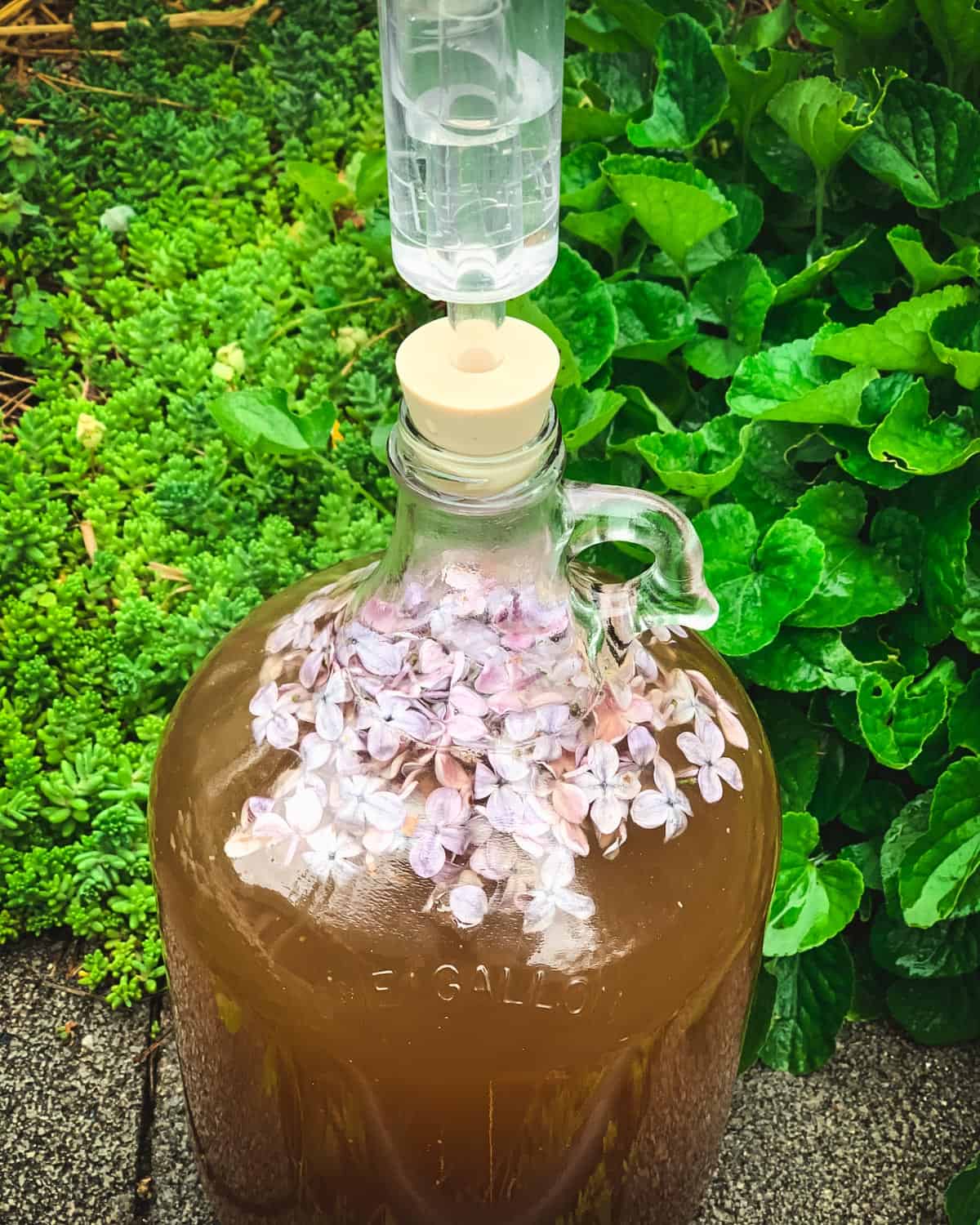
In a few hours, or overnight, you will begin to see tiny fermentation bubbles rising in the mead!
Look how beautiful this fermenting lilac mead looks in the sunshine!
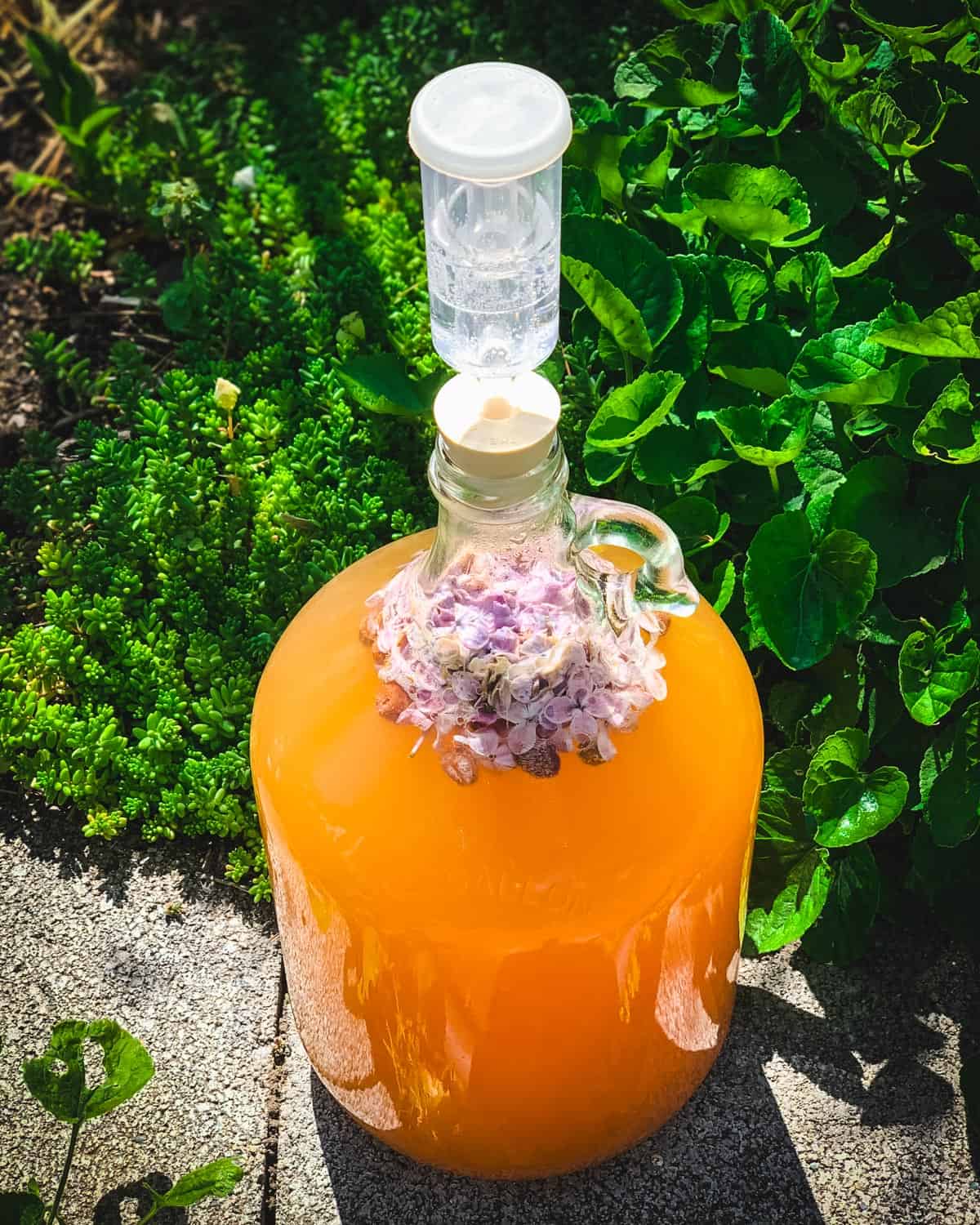
If you look closely you can see the bubbles rising and mixed in with the flowers.
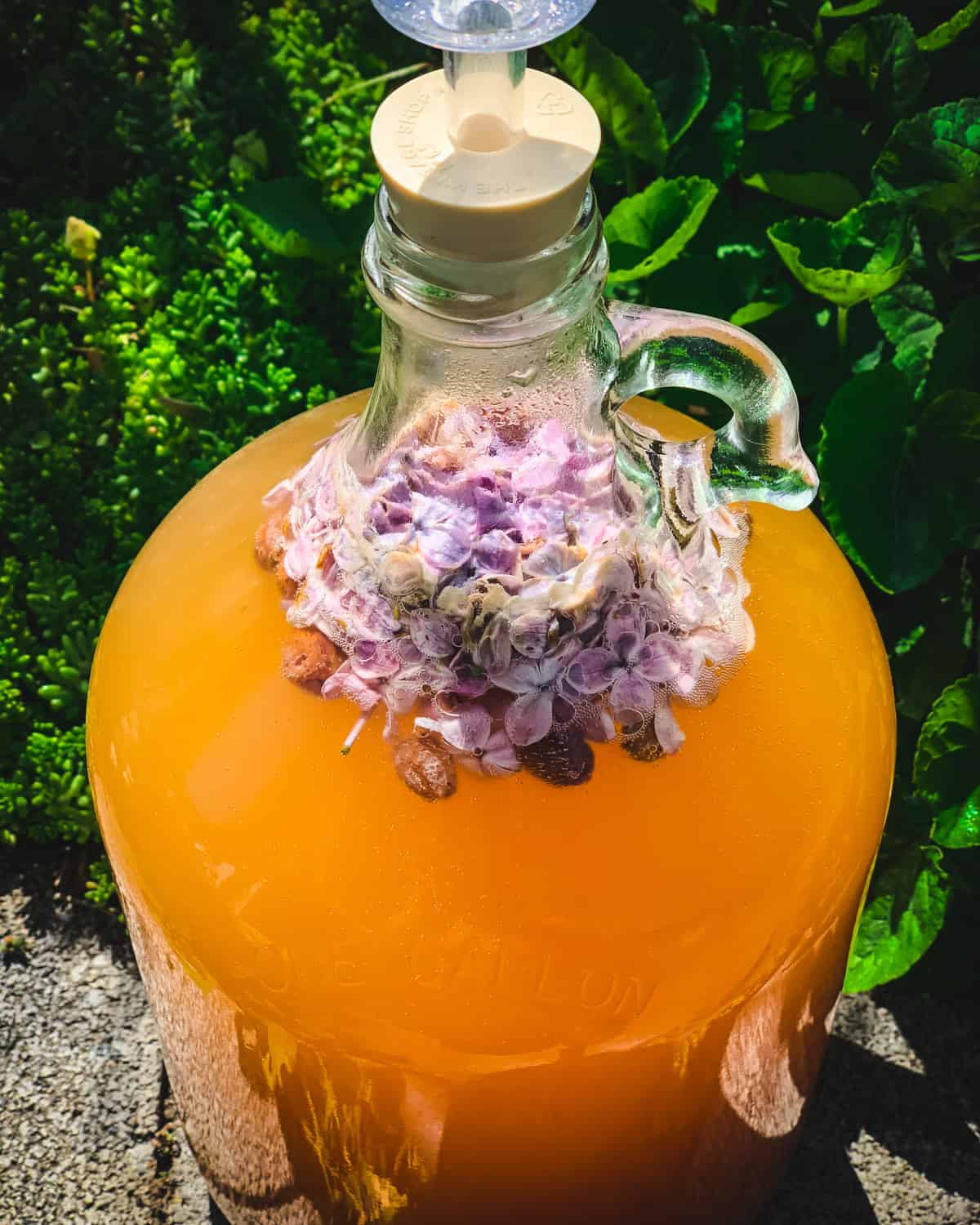
Mead usually takes 3-6 weeks to fully ferment, but this is dependent on a few factors. Ambient temperature (the warmer it is the less time it takes), amount of honey used, and type of yeast used all play a role.
Bottle and Age the Lilac Mead
When there are no more bubbles rising in the jug or in the airlock, then it is safe to bottle and age the mead.
I have a post that explains the process of bottling one gallon of mead.
While you can drink this mead right away, it’s always a good idea to age it for at least a few weeks and up to several months or longer. This will mellow out the flavor significantly.
Then you will have some refreshing and lovely lilac mead to drink! Such a perfect spring and summertime beverage. It is best served cold on a warm day!
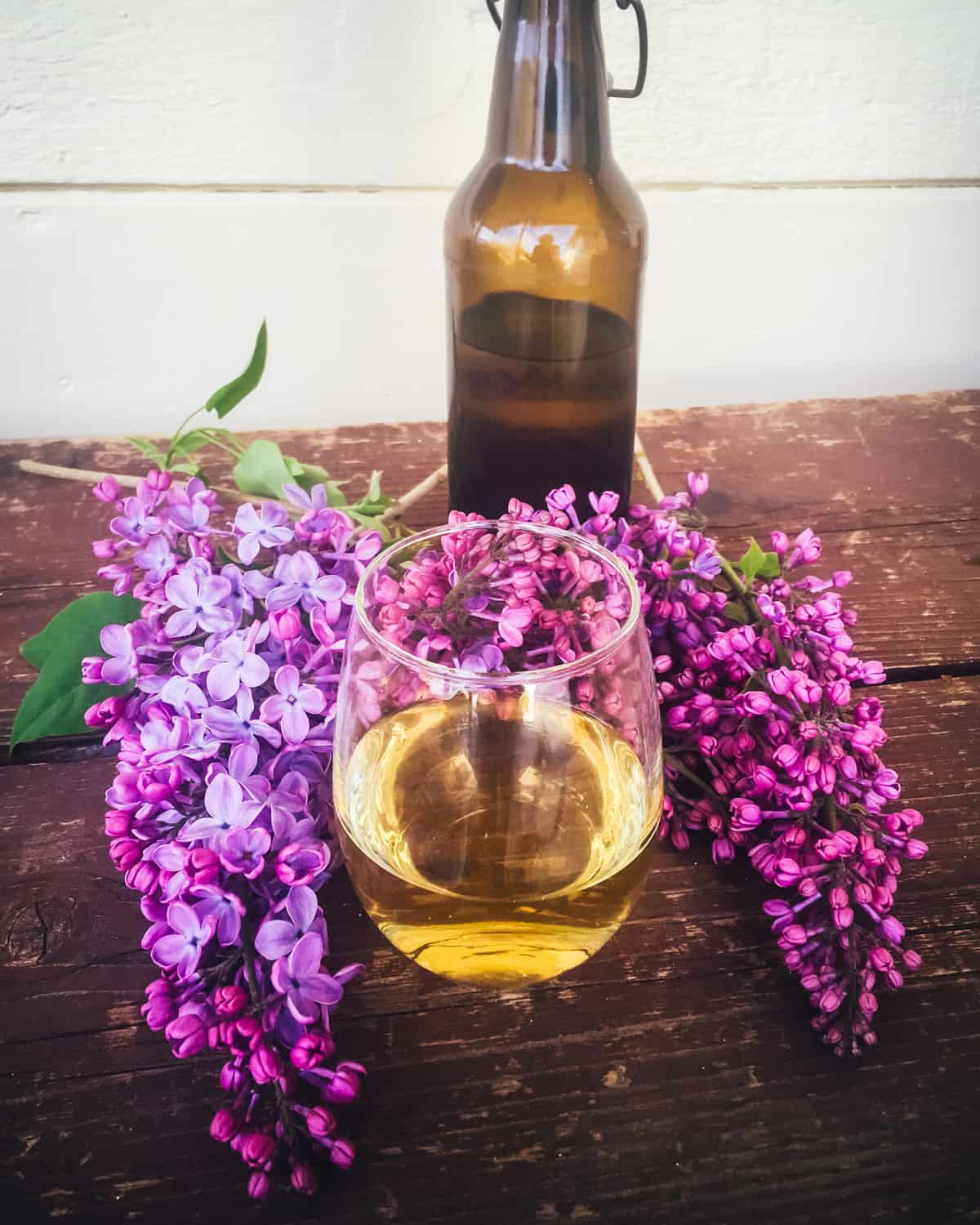
More Mead Recipes
Ready to start brewing your next batch of mead? Here are 15 mead recipes for you to try including:
Lilac Mead
Equipment
Ingredients
- water non-chlorinated or filtered
- 2-3 pounds honey depending on how sweet you want the end product to be
- 1-2 cups lilac flowers
- 1/2 package champagne yeast
- 10 raisins
Instructions
- Sanitize everything that will be used in the brewing process.
- Put 1/2 gallon of non-chlorinated water and the lilac flowers in a pot and bring to a boil. Turn off the heat and let steep for 15-20 minutes. Strain out the flowers.
- Add the honey and stir to dissolve, then carefully pour the honey water mixture into the jug using a funnel. Add the raisins to the jug. Add another cup of lilac flowers to the jug (optional).
- Top off the jug with cold non-chlorinated water, leaving at least 2 inches of head space on top. Put the lid on the jug and gently mix everything around a bit.
- Make sure that the temperature of the must is below 90°F, then add 1/2 packet of champagne yeast. Put the lid back on tightly and this time shake the jug for a minute or two to distribute the yeast.
- Put a little water in the airlock to the line, then put the rubber stopper end into the jug. Put the jug in a dark place. It should start bubbling within 12-24 hours.
- After about 3-6 weeks of fermenting, or once the bubbling has completely stopped, the mead can be bottled and aged.
Notes
- This lilac mead recipe is a variation on my simple one gallon mead recipe. For more detailed directions and photos of the whole process, I recommend heading over to that post first.
- You can find all of the equipment and ingredients you need for mead making here.
- I like to add more lilac flowers as the mead is brewing, just to get more of that flavor, but it is optional.
- Mead usually takes 3-6 weeks to fully ferment, but this is dependent on a few factors. Ambient temperature (the warmer it is the less time it takes), amount of honey used, and type of yeast used all play a role.
- I have a post that explains the process of bottling one gallon of mead.
- While you can drink this mead right away, it’s always a good idea to age it for at least a few weeks and up to several months or longer. This will mellow out the flavor significantly.

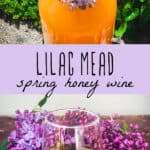
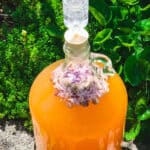

Does the type of lilacs matter, or can you use any strain of Lilac?
You can use any, but I would taste them first to see if you even like the flavor before using them.
Hi, Is it possible to freeze the lilac petal to use later to the mead? or can I dehydrate them?
Hi Jennifer. Yes, you can freeze them. I would separate the flower from the stem, lay them flat and freeze before storing in a freezer-safe container.
Hello!
Really love all your recipes, I’ve yet to find one I don’t like. <3
I made this mead last year, and have had the bottles stored in a closet since then. How do I know they are still good to drink? Any classic signs or things to look out for.
Any advice would be helpful!
Thanks in advance,
Unless there’s mold, they’re perfectly fine to drink.
Did you leave green on the lilacs? That can make it bitter. This my second mead recipe from you and I’m loving them!!
I’m so glad you love my mead recipes! No, for the recipe, I just used the flowers.
Can I use wine yeast instead of champagne yeast?
Yes, you can!
I would add more lilac flowers, as the flavor was very faint. I would also cut the honey, as it was very very sweet. Unless you like it sweeeet. Otherwise it was delicious.
I’m glad you liked it!
What ratio lilac flowers to honey would you use? I too am not a big fan of very sweet drinks but I’d give it a try. Thanks
If the mead was too sweet it wasnt finished fermenting. Meads that are finished have no sugar left in it as the yeast consumed it all. They are called dry. Sweet is unsafe to bottle as it can start to ferment in the bottle and the bottle may explode! Also the more honey per gallon the higher the alcohol percentage 2 to 3 pounds is a normal amount.
Hey, thank your for the recipe! Mine hasn’t turned out very good – very sharp and has that bitter flavor as if I put too many extra lilacs when leaving it to ferment. I was wondering if I can make vinegar out of it. Would hate to discard it… Thanks again!
I only posted this recipe a month or so ago. I recommend bottling and aging your mead for a few months to mellow out the flavor.